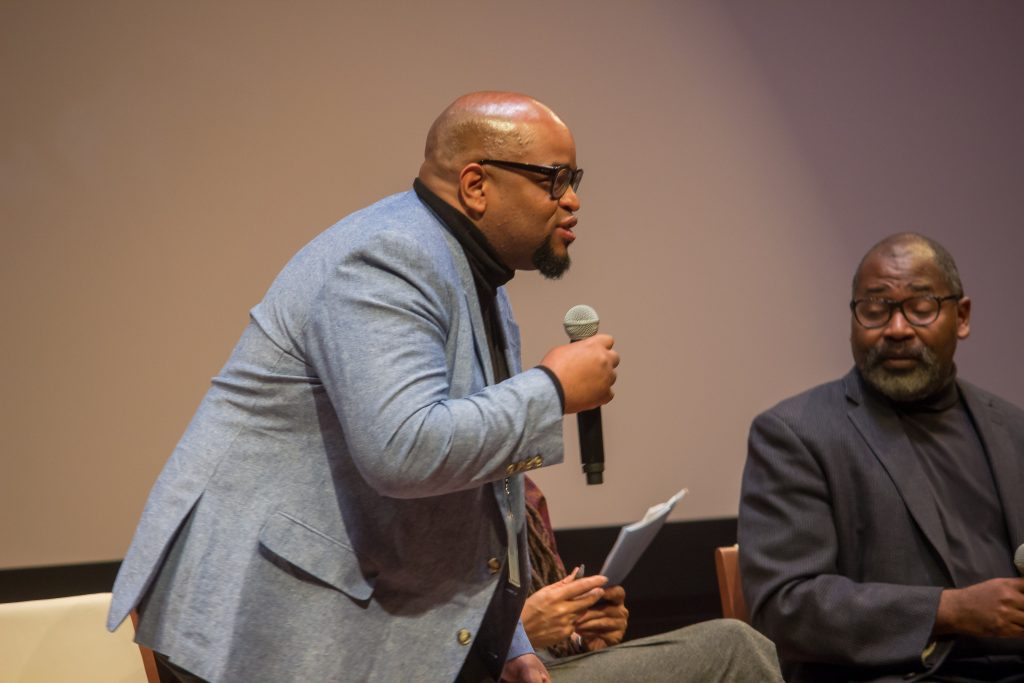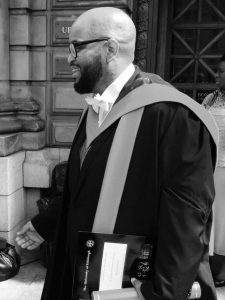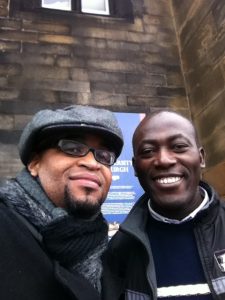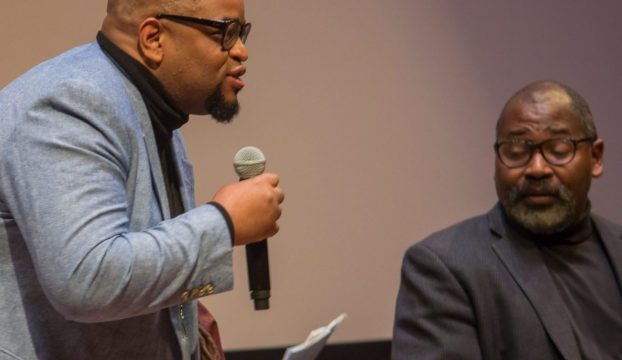
Telling stories that should be told
New College alumnus Dr Eric Lewis Williams graduated with a PhD in Religious Studies in 2015. Following a first academic appointment at Harvard University, where he was Lecturer in African and African American Studies, his career took a surprising turn when he became Curator of Religion at the Smithsonian National Museum’s Center for the Study of African American Religious Life, in Washington, DC — the first to occupy this role in the renowned institution’s history.
Having begun with a BA in sociology at the University of Illinois, Williams progressed to a Master of Arts in Theological Studies at McCormick Theological Seminary, and then on to the MDiv at Duke Divinity School.
“That’s where I became exceedingly interested in the sociology of religions. I learned how to use categories from the history of religions to understand the Pentecostal experience.” (Williams grew up as the son of a Pentecostal pastor.) “After Duke, I worked for a church in New York City. There, I became interested in African and diasporic Christianities. I came into contact with scholars in the U.K., and eventually ended up reaching out to Afe Adogame at Edinburgh. I applied and was accepted. It was a wonderful context for my work.

 “Edinburgh is so beautiful. To be confronted by that beauty on a daily basis, it affects you. I was around people from all over the world who were raising questions on contextual realities. It was wonderful in every way”.
“Edinburgh is so beautiful. To be confronted by that beauty on a daily basis, it affects you. I was around people from all over the world who were raising questions on contextual realities. It was wonderful in every way”.
“Every day is different in my job. My work is primarily focused on the collections, on acquiring objects for the museum. There, my job is about telling stories that should be told. It requires a lot of travel, and the cultivation of relationships. I’m also involved in public programming: we believe our museum belongs to the world, so we take the museum around the country, and the world, through conferences and exhibits. Alongside that, teaching invigorates me.” (Williams is a regular guest lecturer at a host of other seminaries and colleges.)
“I work with journalists in helping them understand religious artefacts. In 2017, the New York Times was planning a story on the discovery of a hymnal belonging to the abolitionist Harriet Tubman. Of course, Tubman was illiterate but could sing every hymn in the book. Talking through the liberative power of that kind of book with the journalist changed the direction of the article. It’s an example of the different angles that religion scholars bring to the museum.”



